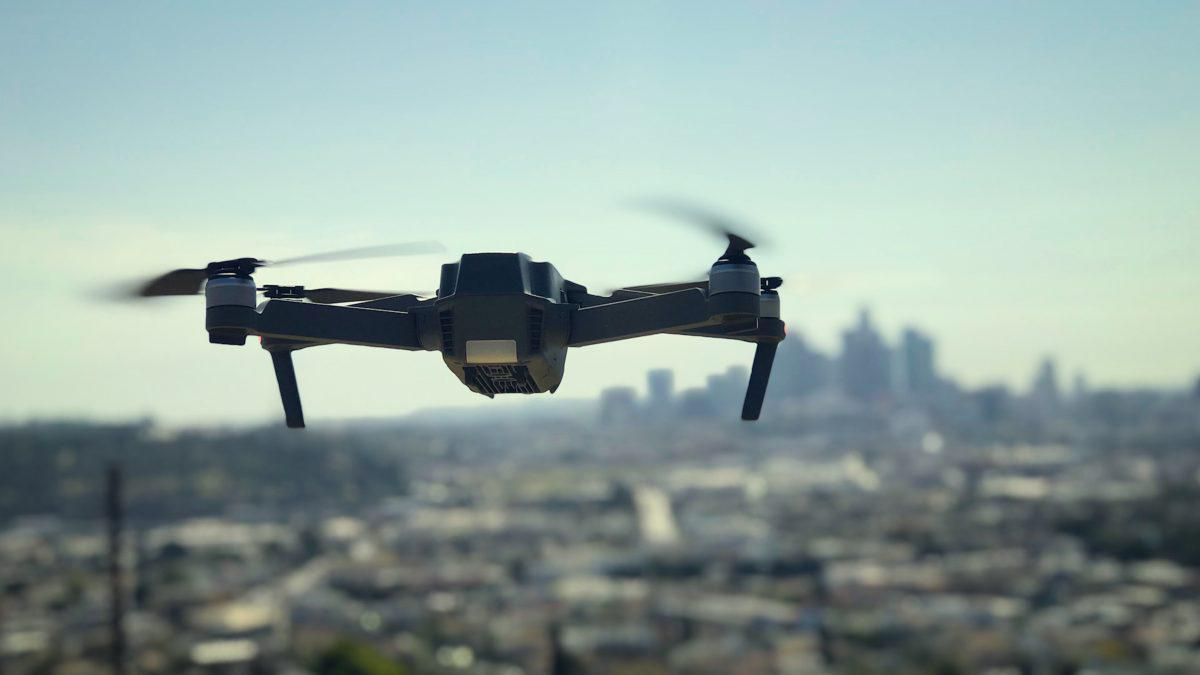Subscripe to be the first to know about our updates!

Drones: Regulation Drives Innovation
Ambika Khanna
Drones, or Unmanned Aircraft Systems (UAS) are now being used for an impressive, and ever-expanding range of tasks – from e-Commerce, recreation, and infrastructure to mapping and disaster relief, and even for COVID-19-related operations.
In November 2020, the Allahabad High Court directed the local administration to deploy drones to check social distancing norms and the use of masks. More recently, drones have been deployed by local administrative bodies to monitor the farmer protests on Delhi’s borders. In spite of the widespread use of drones in India, they are mostly imported. In fact, India topped the list of drone importing countries in 2015. The government wants to change this. The Department for Promotion of Industry and Internal Trade has identified drones as a focus sector with the aim to increase domestic production and reduce imports.
This growing usage of drones for civilian/commercial use has led to the early thinking of the government on its regulation. Unlike other industries, where technological innovation is moving faster than the policymaking, the government is working almost in tandem with drone technology to develop policies for the ultimate benefit of all sector stakeholders.
In 2014, the Directorate General of Civil Aviation (DGCA) released a public notice[4] for the first time, banning civilian use of drones. Subsequently, in 2018, the Civil Aviation Requirements (CAR) – also called Drone Regulations 1.0, was announced, introducing a comparatively radical but basic framework for their operation.
The government did not stop there; it went on to create a Drone Taskforce which then released a comprehensive document – Drone Ecosystem Policy Roadmap in 2019.
Taking a cue from this document, the Ministry of Civil Aviation, in June 2020, released draft rules on drones which were more evolved, progressive, and also exhibited a greater understanding of the needs of the industry. Amongst other things, the draft introduced the concepts of drone ports (designated areas dedicated to facilitating the take-off and landing of UAS), a drone corridor (a separate airspace that does not interfere with manned aircrafts), drone traders and drone insurance.
The draft policy, expected to replace Drone Regulations 1.0, leaves scope for adaptation as per industry needs, by empowering the DGCA to regulate on a case-to-case basis.
In addition, the government has also released supplemental policies such as the National Counter Rogue Drone Guidelines[8] and the draft Unmanned Aircraft System Traffic Management Policy.
On the consumer front, the DigitalSky Platform, is a novel initiative to provide a one-time digital registration process for drones, pilots, and owners. However, weak implementation has prevented industry stakeholders from receiving the benefits anticipated from this platform.
While the government puts its best foot forward, an analysis of the drone policies, reveals some lacunae and possible points of improvement. These are as follows:
- Data protection and privacy: With the strong investment potential in this sector by private players who will use drones in their daily operations, such as Zomato, Amazon and Tata, privacy and protection of data is a major concern. Drones are capable of recording video and audio footage and can do so at high flight ranges too. The current policy framework is vague – it does not adequately address how the data will be collected, stored or used or retained. This data may be used by these players for various purposes without the knowledge of the owner of the data. Drones used for surveillance (mass or private) also raise similar concerns.
- Cybersecurity: Drones are prone to hacking and can be easily compromised if not adequately protected. The data (video or audio) that is collected by the drone is relayed back to the receiver/ drone operator or pilot through wireless data links. It is paramount that this data is securely encrypted. The DGCA along with the Indian Computer Emergency Response Team (CERT-In), should consider creating a robust cyber security framework for drones based on the Cybersecurity Trust Framework by the International Civil Aviation Organisation (ICAO), a United Nations agency, and the global forum for civil aviation.
- Compliances: The current policy framework is ambiguous on compliance requirements and also cumbersome where clear. For instance, the draft UAS rules require import clearances for parts or components of drones. With drone manufacturing still in a nascent stage, parts are imported from diverse countries like Israel and China. This means separate clearances are required for every part of a drone imported, which could create regulatory hurdles, deterring investments.
Moreover, separate licenses are required from multiple regulatory bodies including Ministry of Civil Aviation, Department for Promotion of Industry and Internal Trade, and Department of Telecommunications, and in some cases the Ministry of Home Affairs, to manufacture drones,
Improving the policy on drones will not only provide the requisite impetus to the industry but also attract investors and boost domestic manufacturing of drones. The sector is already valued at $885 million in India and has huge potential to be a game changer across both the public and private sectors. Recognising this, the DGCA in June 2020 permitted 13 companies, including Zomato and Dunzo, to start testing drone deliveries in India.
With the government’s Atmanirbhar Bharat vision and the Make-in-India policy, India has exhibited potential in domestic manufacturing. This was evidenced by the indigenous drones – Lakshya, Nishant and more recently, Rustom, manufactured by the Defence Research and Development Organisation (DRDO). India must use effective regulations to leverage these latent capabilities. It will be a crucial step to drive benefits from drone technology usage and spur the inclusion of India as a key player in the global drone supply chains of the future.
Source; Gateway